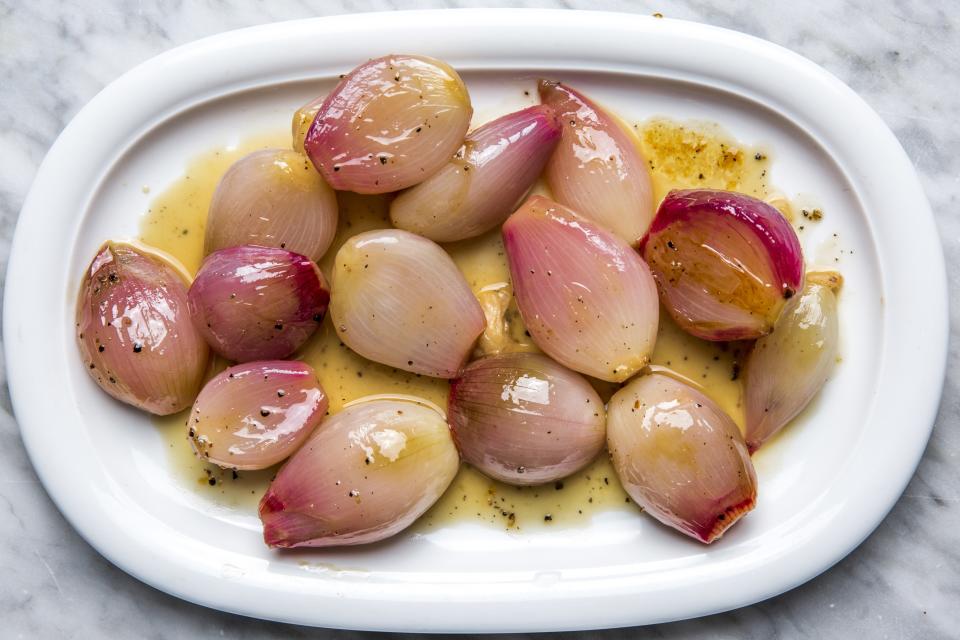What Are Shallots? And What's So Great About Them, Anyways?
I was accidentally introduced to shallots. When I was in college, I picked up a few very large shallots thinking they were very small, strange onions and bought a great big bag of them. I was clearly not thinking straight (read: hungover), but hey, that blunder changed my life forever. I went from "Wait, what are shallots??" to "I buy shallots every time I go to the grocery store" reeeeeal quick. That's true about buying them every time I'm at the store, by the way. I do. Every damn time. I always have a few shallots in my kitchen, because they are hands-down the best allium that has ever existed (and will ever exist, for that matter). But most people are faced with the same question I had the first time they encountered a shallot (whether it be accidental or intentional): What the hell are these things, and why is everyone so excited about them?
Shallots are alliums, in the same family as white, red, and yellow onions, along with leeks, scallions, and garlic. That means they have that flavor that somehow borders on sweet, acidic, spicy, and sharp all at the same time. But the flavor of a shallot differs from that of a regular old onion in a few very important ways. The flavor of a shallot is more delicate, softer, and less abrasive than that of an onion. (Take heed, self-professed onion haters out there.) But the flavor is also a bit deeper, bringing in notes of garlic, which a white or red onion definitely doesn’t have. What I'm trying to say is, it’s all hits and no misses for a shallot.

thanksgiving-side-cwar-shallots-beauty
And when you cook a shallot, it melts. Well, not literally. But the cell structure that holds slices of shallot together breaks down more easily than that of an onion, which holds its shape pretty well in any cooking method besides caramelization. That means that they're more likely to disappear quietly into whatever dish you're working them into, allowing that delicate flavor to permeate every inch of a given dish. And roasting shallots whole is a magical experiences, because you get an almost creamy consistency on the very center of the shallot, once you break through the outermost layer.
But sometimes you don’t have shallots. So substituting yellow onions it is. For the most part, you can substitute chopped yellow onion for chopped shallot at a 1:1 ratio. (I say "chopped" because, as is pretty obvious, you can't just substitute one shallot for one onion because of the difference in size.) But if the recipe calls for more that 1½ cups of shallots, can’t just substitute yellow onion for shallots. That mild shallot flavor is important, so using onions will overpower the rest of the flavors in the dish. Cutting the onions smaller and cooking them down further can help solve this problem.
If you really want to know why my shallot love is so strong, try something for me. Take a few peeled shallots, toss them in olive oil, salt them aggressively, and throw them in the oven at 425°. Let them roast until they start to develop some serious color on the outsides. (You can slice them in half before roasting them too, if you want more exposed, crisp-able surface area.) Take them out of the oven, let them cool, and dip them in a simple mixture of olive oil, Greek yogurt, black pepper, and salt. They will be absolutely bonkers. The creaminess, the mild allium flavor, the sweetness. Unlike an onion, you can just eat them straight up. Again. And again And again.
Shallots are everything onions want to be. And they don’t even get cocky about it! Take the leap of faith. Grab shallots at the grocery store next time. Roast them. Sauté them. Grill them. Explore. You’re in good, less-smelly hands. I promise.

